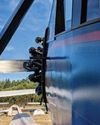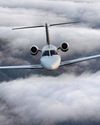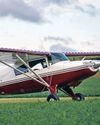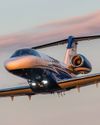
You can imagine our deep sense of grief when occasionally we’d return to a city on our ground-school circuit and someone would say, “Did you hear about Bill?” “No,” we’d say, “what happened to Bill?” They would then explain the aircraft crash that had killed Bill. It happened all too often. We began to realize the things that were killing these learning pilots were things the FAA was not asking on the knowledge tests.
The problem was, the FAA wanted a bell-shaped distribution of test scores on the test results. It was difficult for them to get a bell-shaped curve because our highly motivated students would come back to our classes and discuss with us what they had been asked on their knowledge tests. We would immediately change our courses to do a better job of covering anything they had missed. Consequently, our next students would not miss many questions—frustrating the test givers. To get applicants to miss questions, the FAA had to make the questions trickier and more difficult—and less and less relevant to the risk-management issues pilots face in real life.
Martha and I began to realize that we were spending our weekends covering tricky questions and trivia that was irrelevant to actual flight, while the things actually causing fatalities were not being asked and, therefore, not being taught.
This story is from the December 2020 edition of Flying.
Start your 7-day Magzter GOLD free trial to access thousands of curated premium stories, and 8,500+ magazines and newspapers.
Already a subscriber ? Sign In
This story is from the December 2020 edition of Flying.
Start your 7-day Magzter GOLD free trial to access thousands of curated premium stories, and 8,500+ magazines and newspapers.
Already a subscriber? Sign In

The Temple of Speed
Reno entices even this altitude-oriented pilot.

Flat Sixes
Fanatical artisans

Blue over Green, Tent in Between
I’m old , I’m cranky. Why do I keep air-camping?

Gulfstream Reveals G400, G800
The product lineup gains large-cabin and ultralong-range mounts.

Every Airplane Requires a Checkout
Embrace the challenge of mastering a new machine.

Fuhggedaboutit
Fifty-plus years of f lying forgetfulness

THE MAULE FAMILY APPROACHABLE AIRCRAFT
Choose your mount —the Maules do it all.

Sisters
“ Women certainly have the courage and tenacity required for long flights.” —Mildred Doran

INSIDE OUT OR OUTSIDE IN?
What kind of pilot should you be?

WE FLY: CESSNA CITATION CJ4 GEN2
THE FLAGSHIP CJ JUST GOT A WHOLE LOT BETTER.